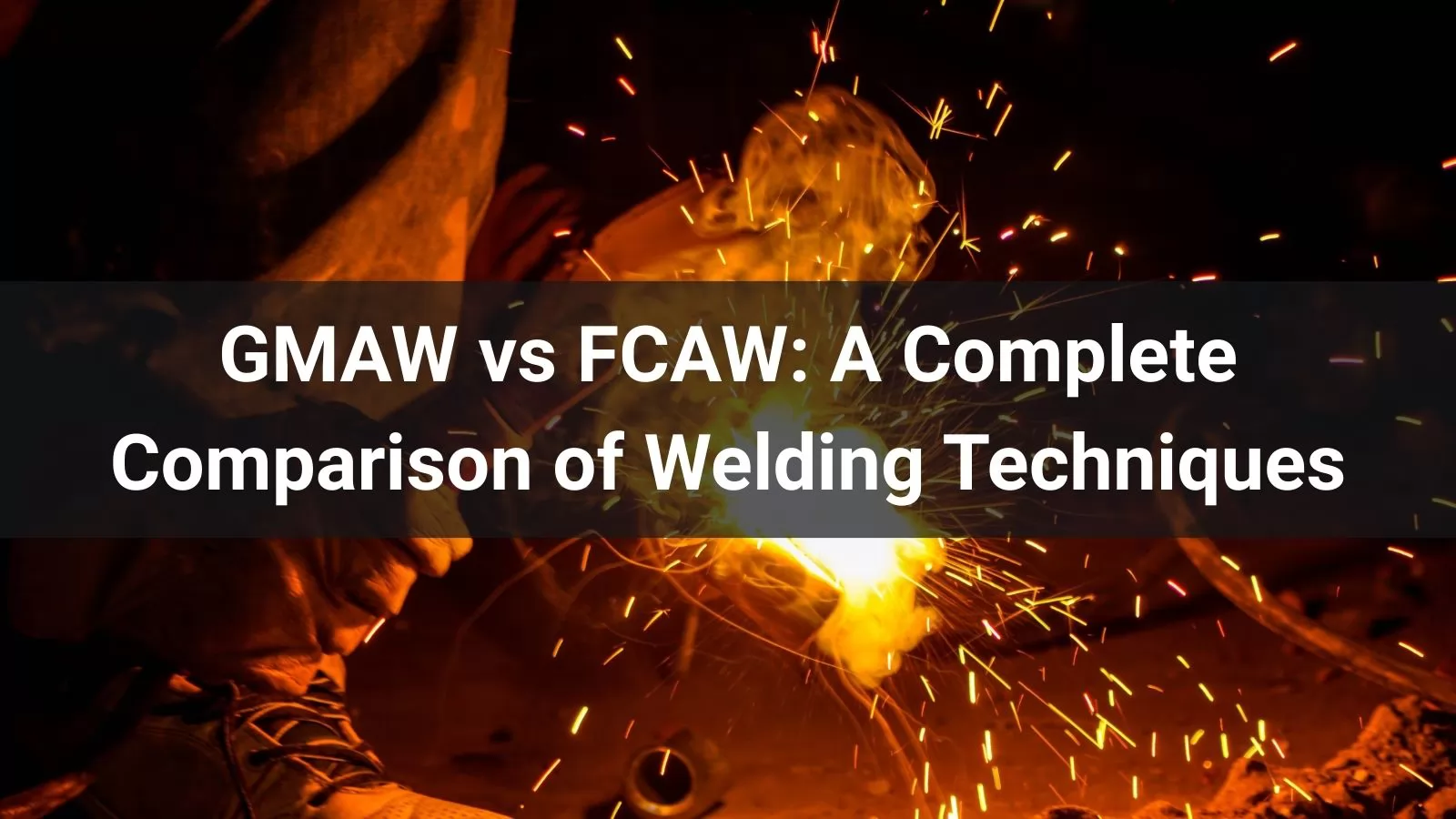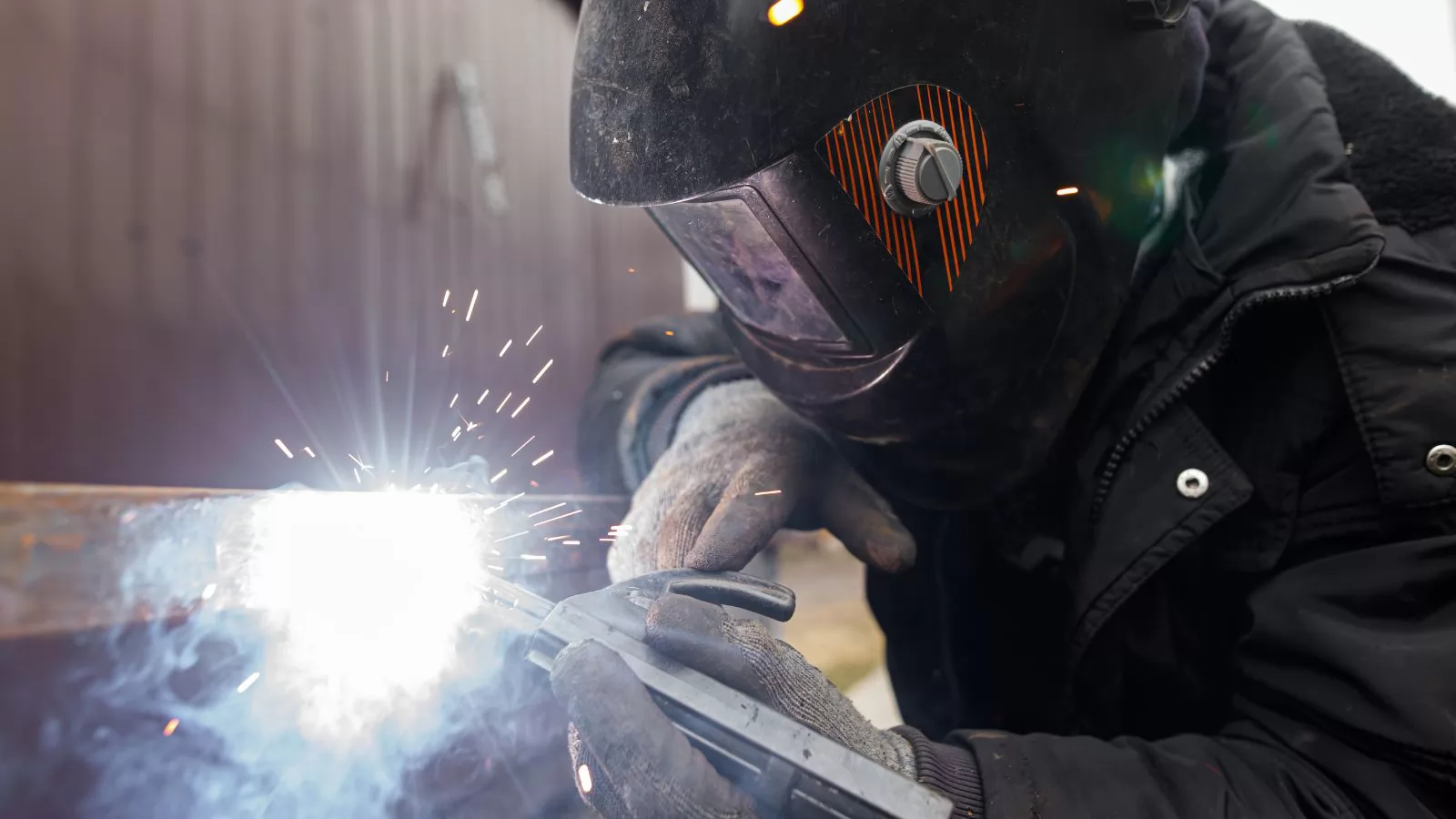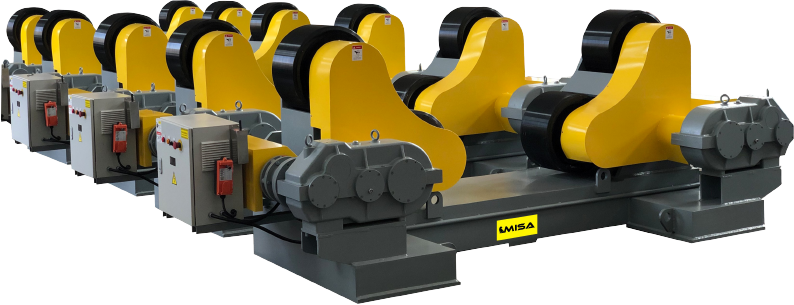


.png)
.png)
.png)



Welding is the backbone of modern manufacturing, construction, and metal fabrication, enabling the joining of metals to create everything from skyscrapers to automotive parts. Among the most widely used welding processes are Gas Metal Arc Welding (GMAW) and Flux-Cored Arc Welding (FCAW). Both techniques rely on an electric arc to melt metal, but their unique characteristics make them better suited for specific applications. Understanding the differences between GMAW vs FCAW is critical for professionals seeking to optimize efficiency, quality, and cost in their welding operations. This comprehensive guide breaks down each process, compares their strengths and limitations, and helps readers determine which technique is right for their needs.
Gas Metal Arc Welding (GMAW), commonly known as MIG (Metal Inert Gas) welding, is a semi-automatic or automatic arc welding process that uses a continuous solid wire electrode to create an electric arc between the electrode and the workpiece. The heat from the arc melts both the electrode and the base metal, forming a weld pool that cools to create a strong bond. GMAW is valued for its versatility, making it a staple in industries ranging from automotive repair to industrial manufacturing.
GMAW uses a solid, non-flux-cored wire electrode, typically made from mild steel, stainless steel, aluminum, or other alloys. A shielding gas—often a mixture of argon, carbon dioxide, or helium—is continuously fed through the welding gun to protect the molten weld pool from atmospheric contaminants like oxygen and nitrogen. This shielding gas prevents porosity, oxidation, and other defects that would weaken the weld.
One defining feature of GMAW is the absence of slag. Unlike processes that use flux (such as FCAW or Stick welding), GMAW relies solely on gas for shielding, eliminating the need for post-weld slag removal. This saves time in production and reduces the risk of slag inclusions, which can compromise weld integrity.
GMAW offers excellent visibility of the weld pool and arc, as there is no slag to obscure the view. This visibility, combined with the smooth, consistent wire feed, gives welders greater control over the welding process. It is particularly beneficial for precision work and thin materials, where accuracy is critical.
Pros:
Cons:
Flux-Cored Arc Welding (FCAW) is a variation of GMAW that uses a tubular wire electrode filled with flux. Like GMAW, it creates an electric arc between the electrode and workpiece to melt metal, but the flux within the electrode serves a dual purpose: generating a shielding gas when heated and forming a protective slag over the weld pool. FCAW is prized for its portability and performance in harsh conditions.
FCAW uses a flux-cored wire electrode, which contains a mixture of metallic oxides, silicates, and other compounds. When the arc heats the wire, the flux decomposes to release a shielding gas (typically carbon dioxide and oxygen) that protects the weld pool. There are two types of FCAW:
A key characteristic of FCAW is the formation of a slag layer over the weld bead as the flux cools. This slag acts as a secondary shield, slowing cooling to reduce cracking and trapping contaminants. However, it requires removal with a chipping hammer or wire brush after welding, adding a step to the process.
FCAW generally offers lower visibility than GMAW due to the slag and increased smoke generated by the flux. This can make it more challenging to monitor the weld pool, especially for beginners. However, experienced welders often adapt, and the process still provides sufficient control for heavy-duty applications.
Pros:
Cons:
| Feature | GMAW (MIG Welding) | FCAW (Flux-Cored Arc Welding) |
|---|---|---|
| Electrode | Solid wire (no flux) | Tubular flux-cored wire |
| Shielding | External gas (argon, CO₂, or mixtures) | Flux-generated gas (self-shielded) or flux + external gas |
| Slag Formation | None | Yes (requires removal) |
| Best Conditions | Indoor, low wind | Indoor/outdoor, windy conditions |
| Penetration | Moderate (better for thin materials) | Deep (ideal for thick materials) |
| Material Compatibility | Steel, aluminum, stainless steel, etc. | Primarily ferrous metals (steel, cast iron) |
| Post-Weld Cleanup | Minimal (no slag) | Required (slag removal) |
| Portability | Lower (tied to gas cylinders) | Higher (self-shielded version) |
| Visibility | Excellent | Reduced (due to slag and smoke) |
GMAW’s dependence on external gas makes it vulnerable to wind, which can disperse the shielding gas and introduce contaminants. This limits its use to indoor or sheltered environments. FCAW, especially self-shielded variants, thrives in windy or outdoor settings, making it indispensable for construction sites, shipyards, and remote projects.
GMAW excels with thin to medium-gauge metals (up to 1/2 inch) due to its controlled heat input and reduced risk of burn-through. FCAW, with its higher heat output and deeper penetration, is better suited for thick materials (1/4 inch and above), such as structural beams or heavy machinery components.
Initial equipment costs for GMAW are higher due to the need for gas cylinders, regulators, and hoses. FCAW (self-shielded) avoids these expenses, making it more cost-effective for mobile operations. However, flux-cored wires are generally more expensive per pound than solid wires, which can offset savings in high-volume applications.
GMAW produces cleaner, smoother welds with minimal spatter, reducing the need for post-weld grinding or finishing. FCAW welds often require slag removal and may have more spatter, but the slag layer can improve toughness by slowing cooling, making it beneficial for high-stress applications.

Both processes can produce strong welds when performed correctly, but FCAW typically offers higher tensile strength and toughness due to deeper penetration and slower cooling (aided by slag). This makes it better for high-stress structural applications.
FCAW has lower upfront costs because self-shielded versions don’t require gas equipment. However, flux-cored wire is more expensive than solid wire, so GMAW may be cheaper for large-volume projects.
GMAW can replace FCAW in indoor, low-wind environments where thin to medium materials are used. However, FCAW’s portability, performance in harsh conditions, and ability to weld thick or dirty metals make it irreplaceable in many industrial settings.
GMAW is generally easier for beginners due to better visibility and less spatter. FCAW’s reduced visibility and slag formation require more skill to master, though experienced welders often appreciate its versatility.
GMAW typically has higher travel speeds and requires less post-weld cleanup, making it faster for continuous production. FCAW’s deposition rates can be higher, but slag removal adds time.
GMAW and FCAW are both indispensable welding techniques, each with unique strengths that cater to specific applications. GMAW (MIG welding) stands out for its precision, clean welds, and versatility in indoor settings, making it ideal for automotive, aerospace, and high-volume fabrication. FCAW, on the other hand, excels in harsh environments, offering portability, deep penetration, and performance on thick or dirty materials—key for construction, shipbuilding, and fieldwork.
When deciding between GMAW vs FCAW, consider your work environment, material type, thickness, and production needs. By aligning the process with your specific requirements, you can optimize efficiency, quality, and cost. Whether you prioritize speed and cleanliness or durability and portability, understanding these differences ensures you select the right tool for the job.


